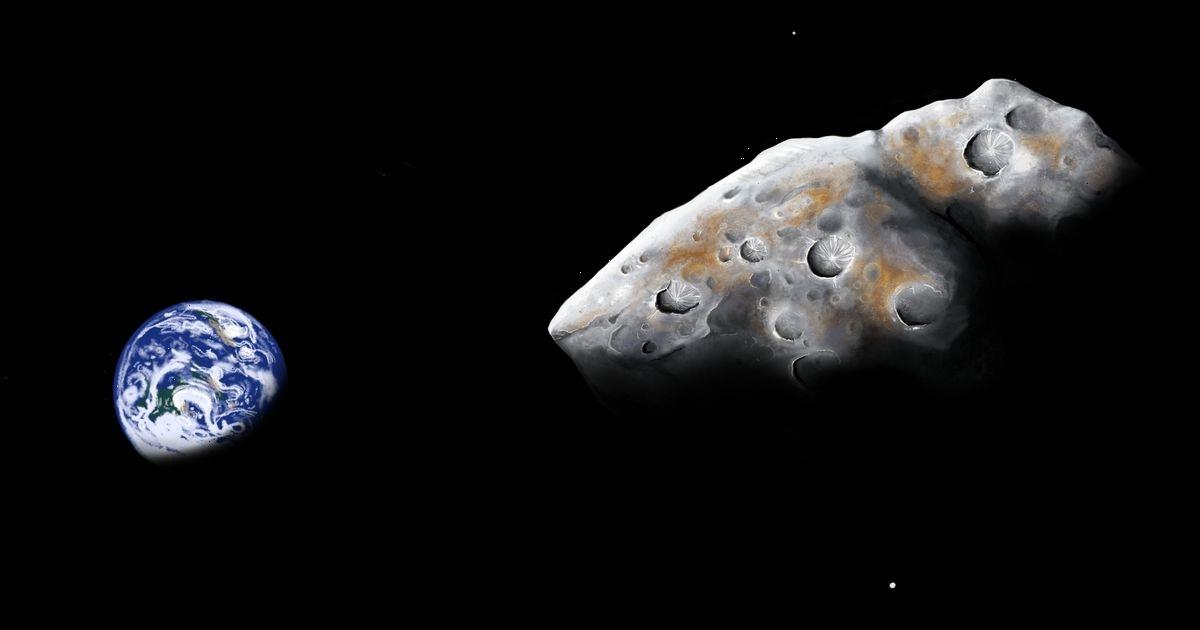Newsnight: Expert discusses keeping global warming below 1.5C
We use your sign-up to provide content in ways you’ve consented to and to improve our understanding of you. This may include adverts from us and 3rd parties based on our understanding. You can unsubscribe at any time. More info
According to combined data from three NASA satellites, the planet’s mesosphere has been cooling shrinking at a rate of about 500ft to 650ft a year for the last 30 years. The mesosphere extends between 30 and 50 miles above the planet’s surface and is much thinner than the atmospheric layer we live in – the troposphere. Scientists have attributed this worrying phenomenon to the effects of climate change and, unless something is done to slash the planet’s greenhouse emissions, it is expected to continue.
James Russell, a study co-author and atmospheric scientist at Hampton University in Virginia, said: “Down near Earth’s surface, the atmosphere is thick.
“Carbon dioxide traps heat just like a quilt traps your body heat and keeps you warm.”
The discovery is worrying because it indicates that more heat from the surface is making its way to the upper parts of the atmosphere.
Once there, any heat captured by molecules of carbon dioxide (CO2) is lost to space, causing the air to cool and contract.
And an increase in CO2, which is very efficient at absorbing heat, means more heat is lost to space.


NASA likened the effect to a balloon shrinking when put in the freezer.
And this is not the only worrying atmospheric discovery scientists have made.
According to a new report published in the journal Science Advances, lower parts of the planet’s atmosphere have risen by up to 200ft (60m) per year in the last 20 years.
Researchers at the University of Toronto in Canada have made the discovery in the troposphere, which is the lowest layer of Earth’s protective air bubble.
The troposphere is a key element to maintaining life on Earth as it hosts the oxygen we breathe and about 85 percent of the atmosphere’s overall mass.
Carbon dioxide: Scientists show how to turn it back to coal
It is also the atmospheric later where most weather occurs, clouds form, and the water cycle brings down rain and snow.
However, it appears as though human activity has also taken a toll on this part of the atmosphere.
Typically, the troposphere is warmest near the Earth’s surface and the mercury drops the higher thermometers go, until they hit the stratosphere.
The stratosphere is home to the ozone layer, which traps heat and causes temperatures to rise again.
But scientists fear that climate change and the greenhouse effect are shifting the balance of temperatures higher up in the troposphere.
According to Jane Liu, an atmospheric scientist at the University of Toronto, volcano eruptions and typhoons can all affect the troposphere’s height.


However, she said: “But in the long run, the two most important factors are tropospheric temperature and stratospheric temperature.”
The unchecked burning of fossil fuels since the dawn of the industrial revolution has caused global temperatures to climb at an alarming rate.
NASA estimates the planet has warmed by a little more than 1C (2F) since 1880 and many projections show the global warming will continue unless something is done to curb greenhouse emissions.
Greenhouse gases, like carbon dioxide (CO2) and methane (CH4) are being pumped into the atmosphere where they trap heat and cause the troposphere to rise.
According to the new study, the troposphere has risen by about the same rates between 1980 and 2000, and 2000 and 2020 – about 164ft (50m) per decade.
Professor Liu said: “All the observational data over this four-decade period of time tell us the same thing.
“This is a clear, robust and strong indication of the tropopause height increase.”
This could have devastating consequences for the planet, according to the expert.
Changes to the troposphere can affect the amount of water vapour in the atmosphere which, in turn, can further affect Earth’s surface temperatures.
Source: Read Full Article


